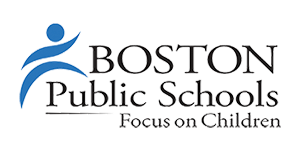- Customer Stories
- Boston Public Schools

Optimizing bus routes helps funnel cost savings back to schools

SAS® Analytics brings intelligence to student transportation.

$5 million
Estimated savings from eliminating need for 50 buses
Boston Public Schools achieved this using • SAS® Analytics
Boston Public Schools uses SAS® Analytics to consolidate stops, improve student experience and save money
With public school districts across the US often underfunded, any money that can be redirected into core educational efforts is a boon for schools – and students. Cost savings can lead to more teachers, better facilities or new books, supplies and technology.
Due to these pressures, Boston Public Schools (BPS) began to look for ways to reduce costs while improving educational outcomes. As part of this effort, the transportation department turned to its busing system to examine how it could make changes that could benefit the classroom, traffic and the budget. With an annual transportation budget of $120 million, compromising nearly 10% of the district’s overall appropriation, any savings could have a significant effect.
BPS turned to SAS Analytics to optimize its bus routes, improving quality of service to students while using fewer buses. SAS used BPS data to optimize the best bus routes and stops to meet the needs of its students. As a result, the district has been able to redirect the money saved toward enhancing educational quality.
Because of SAS, we've found new ways to consolidate bus stops, which leads to savings for the school districts without putting students in unsafe situations. John Hanlon Chief of Operations Boston Public Schools
A better way to get from point A to B
The oldest public school system in America, BPS operates 125 schools serving 57,000 students from pre-K through 12th grade. In 2016, the district provided transportation for 25,000 students via 650 buses across 45,000 miles. This adds up to 20,200 unique stops at nearly 5,000 locations each day.
“We have a generous assignment process where students have a wide array of school choice,” says John Hanlon, Chief of Operations for BPS. “Plus, because of the locations of special education programs or English as a Second Language programs, it adds to a complicated transportation system. Students are transported across the city in the morning and afternoon, close to an hour each way in some cases.”
This effort can cause on-time performance challenges that affect students and their families, as well as an expensive transportation system for the school district to maintain.
The district used the same legacy bus stops year after year. The logistics behind these stops largely weren’t adjusted over time, which was driving up costs. The district wanted to consolidate and streamline routes. The software used to plan bus routes required significant manual adjustments, making it impossible to rapidly evaluate the systemwide impacts of any changes.
“When assigning stops, the district had applied blanket rules to all students,” says Will Eger, Strategic Project Manager. “For example, every student should walk less than half a mile to his or her bus stop. In reality, individual students were walking a wide range of distances. Nor did the stops take into account important factors like the student’s age or neighborhood safety. We needed a way to automatically account for all of those factors without dramatically increasing costs.”
Boston Public Schools – Facts & Figures
57,000
Students to transport
20%
Fewer bus stops
13,000
Pound reduction in daily carbon emissions
Strategic route consolidation quickly yields benefits
The district needed a method to more strategically designate bus stops. SAS Analytics analyzes a wide variety of factors to reduce the number of bus stops to cut costs while better serving the needs of students. The transportation group can enter different sets of constraints into SAS Analytics and see the impact on the total number of stops across the entire system.
For example, the transportation group looked at how many stops it could cut under various route consolidation scenarios. “SAS enables us to understand the policy implications of various tradeoffs throughout the system,” Hanlon says. “Before, we didn't really control for the average distance that students walked by their grade or age, and we didn't control for neighborhood safety. Now, we can integrate that along with location and other information to better serve the students.”
BPS has begun rolling out individualized walk-to-stop maximums for each student – all while reducing the number of bus stops. Strategic stop placement has been a big part of the story for a district that last year eliminated nearly 50 buses (about 8% of the total) for a long-term cost savings that’s expected to top $5 million.
The reduction in force has also had significant environmental benefits. “We’ve saved about 13,000 pounds of carbon emissions a day, which is huge,” Eger says.
“Because of SAS, we've found new ways to consolidate bus stops, which leads to savings for the school districts without putting students in unsafe situations, and keeping them close to home in terms of the distance to their bus stops,” Hanlon says. “It also allows us to think differently about the power of analytics, and what it can bring to the transportation system as a whole.”
본 문서에 나오는 결과는 본 문서에 설명된 특정 상황, 비즈니스 모델, 데이터 입력 및 컴퓨팅 환경에 적합하게 되어 있습니다. 각 SAS 고객의 경험은 고유한 것으로, 비즈니스 및 기술적 변수에 따라 달라집니다. 따라서 모든 서술은 비전형적인 것이라는 점을 고려해야 합니다. 실제 절약, 결과 및 성능 특성은 개별 고객의 구성 및 조건에 따라 달라질 수 있습니다. SAS는 모든 고객이 비슷한 결과를 달성할 수 있다고 보증하거나 진술하지 않습니다. SAS 제품과 서비스에 대한 유일한 보증은 해당 제품 및 서비스에 대한 서면 계약의 보증서에 명시되어 있습니다. 본 문서의 어떠한 내용도 추가 보증을 구성하는 것으로 해석될 수 없습니다. 고객은 SAS 소프트웨어의 성공적인 구현에 따라 합의된 계약적 교환 또는 프로젝트 성공 요약의 일환으로 성공 사례를 SAS와 공유했습니다. 브랜드 및 제품 명칭은 각 기업의 상표입니다.
